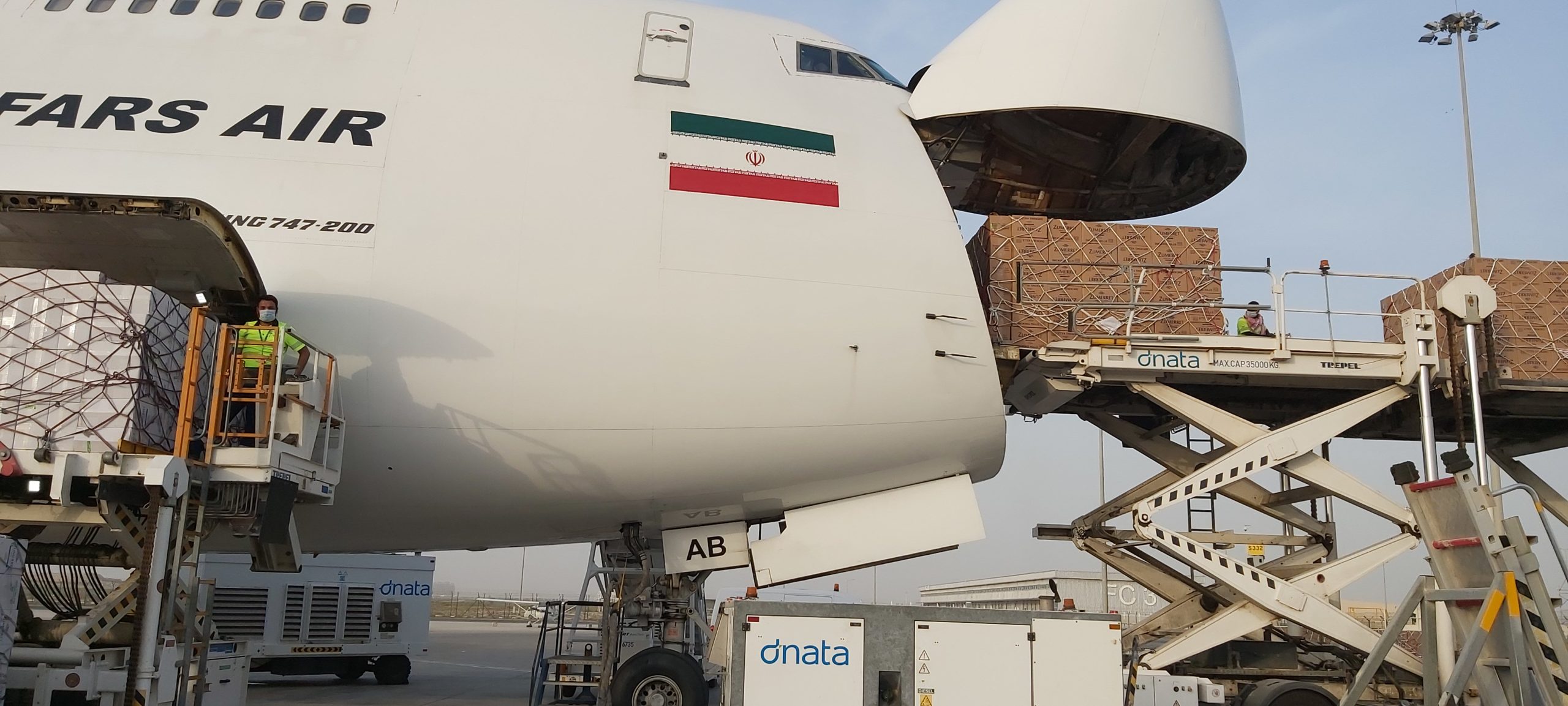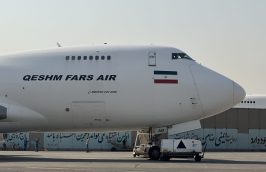Air transport challenges
07 March 2024
comment count: 33
view count: 175

Introduction
Air transportation is a method for transporting passengers and cargo to other cities and countries in the shortest possible time. The cost of this method is higher, compared to land and sea transportation, but its high speed ensures that the cargo will reach its destination within 1 to 5 days. Given this advantage, various air transportation methods have been designed for cargo transportation and transfer, and individuals must choose one for air cargo shipment based on the cargo characteristics and the advantages and limitations of each method. Therefore, in this article, we will examine the different types of air freight and introduce the types of aircraft capable of carrying cargo. So if you intend to transport cargo by air to outside the country, please read this article to the end before taking any action.
Types of Air Transportation Methods
Air transportation can be categorized based on different criteria, the most important of which are price, capacity, speed, and ownership.
The methods discussed below can be placed in one or more of the above categories.
Excess Baggage
Based on every air journey and depending on the airline policies, passengers are allowed to carry 20 to 35 kilograms of luggage, if the weight of a passenger’s luggage exceeds the maximum allowable weight, they must pay a penalty per kilogram of excess baggage, which is called “excess baggage fee.” In such situations, each passenger will have a maximum allowable weight of additional cargo. Therefore, excess baggage can be a method for air transportation of cargo to another city or country.
Passenger Freight
Air cargo transportation methods are diverse, and depending on the characteristics, weight, and dimensions of the cargo, passenger freight can also be included. Passenger freight is a simple and cost-effective way to transport a passenger’s additional cargo by air to a specific destination. In this method, the passenger has no restrictions on cargo carriage, and the cost they pay is much lower than the excess baggage fee.
In passenger freight, the passenger must send the desired goods and cargo a few days before their air travel to the air carrier so that the necessary arrangements can be made for earlier cargo shipment to the destination via freight. Therefore, it is possible that the cargo may arrive at the destination before the passenger.
The cost of passenger freight varies for different destinations, but it is usually one-third of the excess baggage fee accompanying the passenger. Therefore, if the weight and volume of the cargo are such that the excess baggage fee increases significantly, one of the best types of air freight will be passenger freight.
It is very important to note that the passenger freight method is defined only for passengers; this means that only those who intend to travel to the destination country can use this method. Therefore, merchants and other individuals who wish to send cargo to their friends and acquaintances abroad must use other methods, which we will discuss later.
It is important to know that passenger freight has made it possible for passengers to send a large volume and weight of cargo, which can even include household items.
Types of Air Cargo Transportation Vehicles
In air cargo transportation in Iran, two main types of aircraft are used:
1. Passenger Aircraft (PAX)
– Passenger aircraft are commercial airplanes designed to carry both passengers and cargo on the same flight.
– Passenger luggage and belongings are typically loaded into the aircraft’s cargo hold located beneath the passenger cabin.
– There is also some limited space available above the passenger seats for storing carry-on luggage.
– Airlines have very strict regulations regarding the size, weight, and dimensions allowed for passenger baggage.
– The main advantage of using passenger aircraft for cargo transport is the ability to carry both passengers and cargo together in the same flight.
– However, the cargo space on passenger aircraft is much smaller compared to dedicated cargo planes, as a significant portion is occupied by the passenger cabin.
2. Cargo Aircraft (Air Freighter or A/C)
– Cargo aircraft, also referred to as A/C, are designed specifically for air cargo transportation and do not have the capability to carry passengers.
– Both the upper and lower decks of these aircraft types are dedicated to loading and transporting various types of goods.
– One of the main advantages of cargo aircraft is their higher cargo capacity, as there is no need to allocate space for a passenger cabin.
– However, even with cargo aircraft, there are still weight, volume, and dimensional limitations for the cargo. Each shipment has a maximum height, weight, and volume that it can accommodate. These limitations may differ slightly between the upper and lower decks, depending on the structure and design of the cargo aircraft.
– These aircraft types are well-suited for transporting large and heavy cargo shipments, such as vehicles and disassembled machinery, which cannot be easily transported on passenger aircraft.
– Additionally, according to IATA (International Air Transport Association) regulations, certain dangerous goods can only be transported on cargo aircraft, in order to ensure passenger safety.
What are Commercial Goods?
– Commercial goods refer to those items that are imported or exported with the intent of selling them in the market.
– These goods may be sold in their original form, packaged and distributed, or used as raw materials to manufacture other products.
– Exporters are the manufacturing companies or traders that send domestically produced goods out of the country.
– Importers are the companies that purchase goods from foreign traders, international exhibitions, foreign markets, etc. and bring them into the Iranian market.
– The main factor that distinguishes commercial goods is the payment of customs duties upon entry or exit from the country. Commercial goods also require a customs declaration, and any company or trader importing or exporting them must pay the applicable customs fees. Otherwise, the goods are considered smuggled.
Types of Commercial Goods:
– Food items (edible oils, coffee, tea, juices, grains, legumes, sugar, dairy, seafood, etc.)
– Household items (kitchenware, electronics, personal care, decorative items, bedding, etc.)
– Apparel and fashion (clothing, sportswear, formal wear, shoes, accessories)
– Electronics and accessories (radios, phones, TVs, tablets, laptops, cameras, audio/visual equipment)
– Vehicles and spare parts (passenger cars, SUVs, motorcycles, boats, auto parts)
– Industrial products (industrial parts, communication equipment, machinery, industrial supplies, chemicals, etc.)
– Beauty and personal care (perfumes, creams, cosmetics, skin/hair care)
– Pharmaceuticals (vitamins, supplements, medicines, medical supplies)
– Sports equipment (athletic shoes, sports gear, fitness equipment)
– Cultural and artistic products (publications, musical instruments, books, artworks, films)
Documents Required for Commercial Goods Export:
– Health certificate (for food and pharmaceutical items)
– Commercial registration card
– Product standard certificate (for certain goods)
– Product sample
– Packing list
– Product analysis report (if required)
– Sales/purchase invoice for the commercial goods
Differences between Commercial and Non-Commercial Goods:
– Purpose of use: Commercial goods are for distribution and sale, while non-commercial goods meet personal needs.
– Quantity: Commercial goods are imported/exported in large volumes, while non-commercial goods are in very small quantities for personal use or as samples.
– Inspection: Commercial goods must go through inspection and clearance processes, while non-commercial goods can enter without this.
– Business license: A commercial registration card is required to import/export commercial goods for sale, but not for non-commercial samples brought in for personal use.
– Customs duties: All imported goods must pay applicable customs fees, but the process and amount differs between commercial and non-commercial.
Justification Non-Commercial Goods
– Non-commercial goods refer to items that are not intended for sale in the market, but rather for personal consumption.
– The quantity or number of non-commercial goods is limited, as they are not meant for large-scale distribution.
– Additionally, certain other goods used by production units are also considered non-commercial according to the Iranian Customs Organization and the Ministry of Industry, Mine and Trade. These include:
1. Machinery, industrial parts, and equipment used in production units.
2. Goods sent as samples to the country’s laboratories before import.
3. Equipment needed for laboratories, scientific, educational, research, and medical facilities, as well as brochures, technical manuals, product catalogs, technical drawings, etc.
– Commercial and non-commercial goods are distinguished because the import and export regulations for each are different. Obtaining inspection permits, a commercial registration card, and paying customs duties are crucial for commercial goods, and their import/export without these documents is considered illegal.
Owners of Commercial Goods
– The “owner of commercial goods” is the person in whose name the original purchase and shipping documents are issued. The customs clearance and other documents are endorsed and issued in their name.
– The owner of commercial goods can either personally handle the import/export process or delegate it to another person (their legal representative). In the latter case, a legal power of attorney is required when pursuing the import or export of the commercial goods.
- The level of detail provided ensures a comprehensive understanding of the distinctions between commercial and non-commercial goods, enabling readers to navigate the relevant regulations and requirements effectively.



